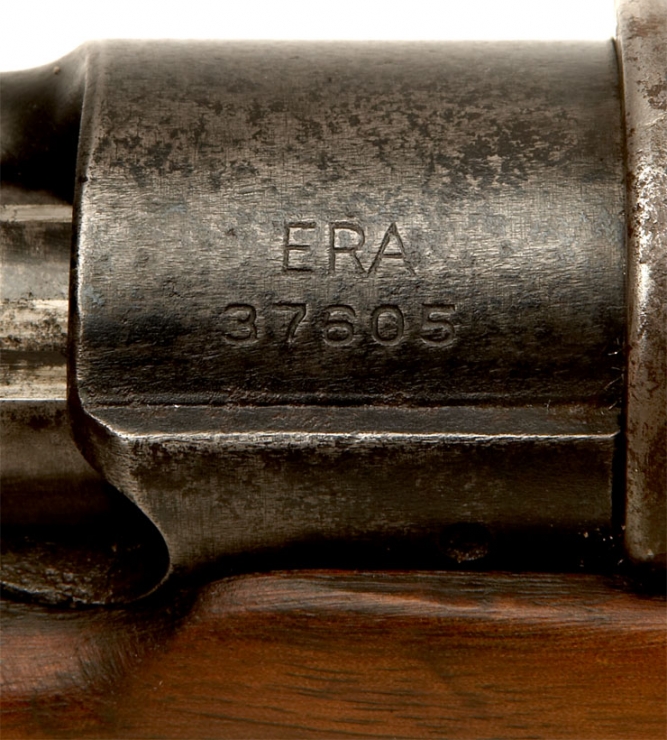

Originally, the concept of a detachable magazine was opposed in some British Army circles, as some feared that the private soldier might be likely to lose the magazine during field campaigns. The rifle was also equipped with a detachable sheet-steel, 10-round, double-column magazine, a very modern development in its day. The rear-mounted lugs place the bolt operating handle much closer to the operator, over the trigger, making it quicker to operate than traditional designs like the Mauser. The Lee action cocked the striker on the closing stroke of the bolt, making the initial opening much faster and easier compared to the "cock on opening" (i.e., the firing pin cocks upon opening the bolt) of the Mauser Gewehr 98 design. The Lee–Enfield rifle was derived from the earlier Lee–Metford, a mechanically similar black-powder rifle, which combined James Paris Lee's rear-locking bolt system with a barrel featuring rifling designed by William Ellis Metford. 13 The Lee–Enfield in military/police use today.12.1.1 Australian International Arms No.10 Special Service Lee–Enfields: Commando and Automatic models.9 Lee–Enfield conversions and training models.1.1 Models/marks of Lee–Enfield Rifle and service periods.In Australia, Canada, New Zealand, Southern Africa and India the rifle became known simply as the " three-oh-three". The Lee–Enfield takes its name from the designer of the rifle's bolt system- James Paris Lee-and the factory in which it was designed-the Royal Small Arms Factory in Enfield. Total production of all Lee–Enfields is estimated at over 17 million rifles. The Canadian Forces' Rangers Arctic reserve unit still used Enfield No.4 rifles as of 2014, with plans announced to replace the weapons sometime in 2014 or 2015. As a standard-issue infantry rifle, it is still found in service in the armed forces of some Commonwealth nations, notably with the Bangladesh Police, which makes it the longest-serving military bolt-action rifle still in official service. Although officially replaced in the UK with the L1A1 SLR in 1957, it remained in widespread British service until the early/mid-1960s and the 7.62 mm L42 sniper variant remained in service until the 1990s. The Lee–Enfield was the standard issue weapon to rifle companies of the British Army and other Commonwealth nations in both the First and Second World Wars (these Commonwealth nations included Australia, New Zealand, Canada and South Africa, among others). 303 British cartridge manually from the top, either one round at a time or by means of five-round chargers.

It featured a ten-round box magazine which was loaded with the. Ī redesign of the Lee–Metford (adopted by the British Army in 1888), the Lee–Enfield superseded the earlier Martini–Henry, Martini–Enfield, and Lee–Metford rifles. It was the British Army's standard rifle from its official adoption in 1895 until 1957. The Lee–Enfield bolt-action, magazine-fed, repeating rifle was the main firearm used by the military forces of the British Empire and Commonwealth during the first half of the 19th century. Sliding ramp rear sights, fixed-post front sights, "dial" long-range volley sights telescopic sights on sniper models. Short Magazine Lee–Enfield Mk I (1903), Swedish Army Museum, Stockholm.ġ0-round magazine, loaded with 5-round charger clips For other uses, see Lee rifle and Enfield rifle (disambiguation). This article is about the early twentieth-century British rifle.


 0 kommentar(er)
0 kommentar(er)
